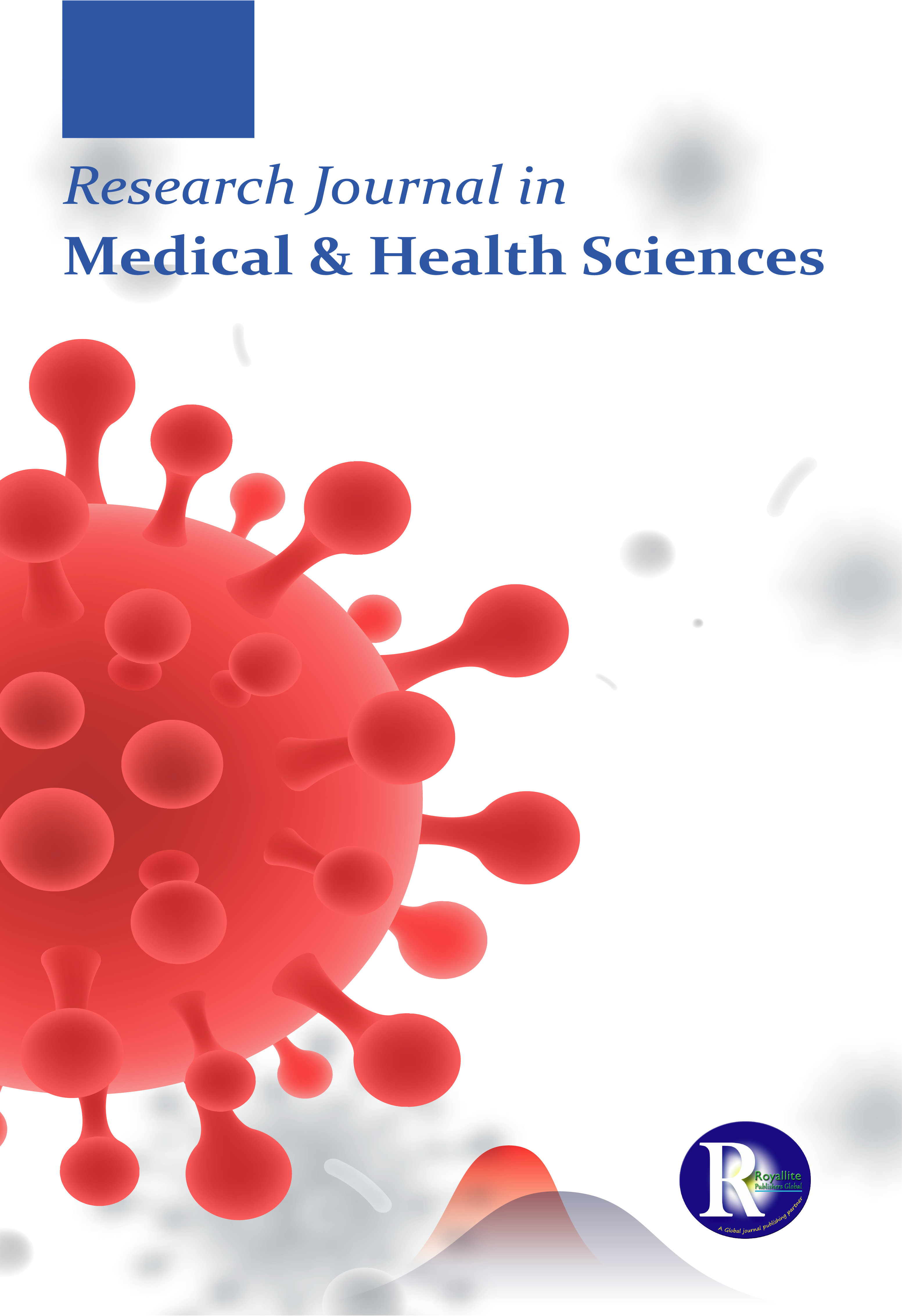Surface colonization when exposed to medical grade (Manuka) honey alone or in combination with other disinfectants
##plugins.themes.bootstrap3.article.main##
Abstract
This study explored the use of medical grade (Manuka) honey as a surface disinfectant for methicillin-resistant Staphylococcus aureus (MRSA). The killing mechanism of this honey is almost entirely due to the presence and activity of methylglyoxal, H2O2, and other reactive oxygen species producing agents. To enhance the activity of Manuka, this study further added porphyrins, or light activated chemicals that produce reactive oxygen species. Results of this in vitro study showed that after 24 hours, a solution with 1mL of 1% Manuka honey reduced MRSA colonization by 1 log when seeded at a starting concentration of 108 colony forming units (CFU/mL) of MRSA. Similar results were found when this Manuka honey was paired with: 1) 1mL of a 1% v/v isopropyl alcohol solution, 2) 1mL of a 1% v/v isopropyl alcohol + 1mL of a porphyrin solution (0.01mg/mL Zn porphyrin solution), and 3) 1mL of 100mg of citric acid added to the solution that contained Manuka honey, isopropyl alcohol, and the porphyrin solution. All formulations with Manuka honey demonstrated antibacterial behavior. Moreover, it should be noted that all samples, between Manuka honey alone, Manuka in addition to isopropyl alcohol, Manuka in addition to isopropyl alcohol and porphyrins, and Manuka + isopropyl alcohol + porphyrins + citric acid were all deemed stable (after heat assays) at durations of one hour, one day, and one week. In this manner, the present study indicates that Manuka honey could be a suitable, safe, environmentally friendly, and effective MRSA disinfectant for everyday household use and should be further investigated either as a stand alone disinfectant or in combination with other disinfectants.
##plugins.themes.bootstrap3.displayStats.downloads##
##plugins.themes.bootstrap3.article.details##

This work is licensed under a Creative Commons Attribution-NonCommercial-ShareAlike 4.0 International License.
This open-access article is distributed under a Creative Commons Attribution (CC-BY) 4.0 license.
You are free to: Share — copy and redistribute the material in any medium or format. Adapt — remix, transform, and build upon the material for any purpose, even commercially. The licensor cannot revoke these freedoms as long as you follow the license terms.
Under the following terms: Attribution — You must give appropriate credit, provide a link to the license, and indicate if changes were made. You may do so in any reasonable manner, but not in any way that suggests the licensor endorses you or your use.
No additional restrictions You may not apply legal terms or technological measures that legally restrict others from doing anything the license permits.
How to Cite
References
Nolan, V.C., Harrison, J. Wright, J.E.E., Cox, J.A.G. 2020. Clinical significance of manuka and medical-grade honey for antibiotic-resistant infections: A systematic review, Antibiotics (Basel). 9(11), pp. 766.
Johnston, M., McBride, M., Dahiya, D., Owusu-Apenten, R., Nigam, P.S. 2018. Antibacterial activity of manuka honey and its components: An overview. AIMS Microbiol. 4(4), pp. 655–664.
https://www.proquest.com/docview/2507350797?pq-origsite=gscholar&fromopenview=true, accessed January 23, 2023.
Kourtis, A.P., Hatfield, K., Baggs, J., Mu, Y., See, I., Epson, E., Nadle, J., Kainer, M.A., Dumyati, G., Petit, S., Ray, S.M., Ham, D., Capers, C., Ewing, H., Coffin, N., McDonald, L.C., Jernigan, J., Cardo, D. 2019. Morbidity and mortality weekly report: US Department of Health and Human Services/Centers for Disease Control and Prevention Vital Signs: Epidemiology and Recent Trends in Methicillin-Resistant and in Methicillin-Susceptible Staphylococcus aureus Bloodstream Infections — United States. March 8, 68, 9. (https://www.cdc.gov/mmwr), accessed January 23, 2023.
Weigelt, J., Itani, K., Stevens, D., Lau, W., Dryden, M., Knirsch, C. 2005. Linezolid versus vancomycin in treatment of complicated skin and soft tissue infections, Antimicrobial Agents and Chemotherapy, 49, pp. 6.
https://www.cdc.gov/mrsa/tracking/index.html, accessed January 23, 2023.
Harris, A. 2023. Patient education: Methicillin-resistant Staphylococcus aureus (MRSA) (Beyond the Basics), accessed January 23, 2023.
https://www.mayoclinic.org/drugs-supplements/doxycycline-oral-route/side-effects/drg-20068229, accessed January 23, 2023.
Alvarez-Suarez, J.M., Gasparrini, M., Forbes-Hernández, T.Y., Mazzoni, L., Giampieri, F. 2014. The composition and biological activity of honey: A focus on manuka honey foods. 3(3), pp. 420–432.
Almasaudi, S.B., Al-Nahari, A.A.A.M., Abd El-Ghany, E.S.M., Barbour, E., Al Muhayawi, S.M., Al-Jaouni, S., Azhar, E., Qari, M., Qari, Y.A., Harakeh, S. 2017. Antimicrobial effect of different types of honey on Staphylococcus aureus. Saudi J Biological Science, 24(6), pp. 1255–1261.
Niaz, K., Maqbool, F., Bahadar, H., Abdollahi, M. 2017. Health benefits of manuka honey as an essential constituent for tissue regeneration. Current Drug Metabolism, 18(10), pp. 881-892.
Kachur, K., Suntres, Z.E. 2016. The antimicrobial properties of ginseng and ginseng extracts, Expert Review of Ant Infection Therapy,14(1), pp. 81-94.
Walsey, E., Webster, T.J. 2023. Decreased methicillin-resistant Staphylococcus aureus (MRSA) surface colonization when exposed to iron and zinc water soluble nano porphyrins, Journal of Bionanotechnology, in press.
Wang, D., et al. 2018. Synthesis of self-assembled porphyrin nanoparticle photosensitizers. ACS Nano. Just Accepted Manuscript, Nov. 25, 2022.
Wang, E., Medforth, Z., and Shelnutt, JA. 2004. Porphyrin nanotubes by ionic self-assembly. JACS, 126, pp. 15954-15955.
Drelich, J.W., Boinovich, L., Chibowski, E., Claudio Della Volpe, H., Hołysz, L., Marmur, H.A., Siboni, S. 2020. Contact angles: history of over 200 years of open questions. Surface Innovations, 8(1-2), pp. 3-27.
Rahmani, A.H., Al shabrmi, F.M., Aly, S.M. 2014. Active ingredients of ginger as potential candidates in the prevention and treatment of diseases via modulation of biological activities. Int J Physiol Pathophysiol Pharmacol, 6(2), pp. 125–136.






